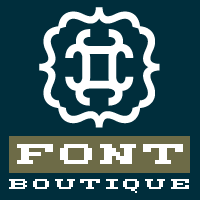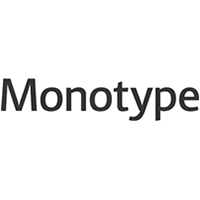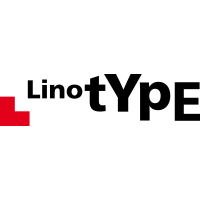
This year marks the twentieth anniversary of FontShop. To celebrate the occasion The FontFeed will be running a series of interviews with its key people. We kick off with Joan Spiekermann, co-founder and still the "mater familias" of the original vendor of digital type. She reminisces about the early pioneering days.
How did the idea originate to start up FontShop?
In 1987 my then husband Erik Spiekermann and I were living and working in Berlin, Germany. When Erik came back from a second or third trip to the USA he was laden with clunky packages of Adobe and Emigre fonts for the Mac, for his office and his designer friends. At the time those fonts were almost impossible to get in Germany. Being a foreigner living in Berlin I was aware of commodities from my home country – and others – not being available in Berlin. Favourite chocolate, bread, newspaper, films, … whatever. Nowadays of course, it's pretty much a global market place, where you find more or less the same things anywhere in the world. But back then, I tended to think of Germany as being a little "behind" in that respect. I, too would get requests to bring back special things every time I went to the UK.
Anyway, we had this thing that whenever we were aware of an obviously good product being unavailable, we would think "loophole in the market!", as you do. Yet this time the combination of digital type and Erik-the-type-man clicked. We both thought "hmmm", and so it came about. I packed in my job as office manager in an English design agency in Berlin and started the untested process of opening the first-ever mail order font boutique.

Joan Spiekermann
When was FontShop founded?
Because the preparations had taken me and Erik almost a year, we actually opened for business on February 8th, 1989 – "business" being me and Petra Weitz sitting by the phone hoping to take orders. We had placed several ads in German design or computer magazines and they were all coming out around that time. FontShop served only the German market then.
Petra had worked with me at the design agency I had left to set up FontShop. When we were about to open FontShop I asked her if she wanted to take a chance on this new venture and come work for us. It was a risk, so understandably she had to give it quite some thought. Her first reaction was that she was afraid that she would be bored. Twenty years later, and whenever she has 50 projects on her desk waiting to be done at once, I sometimes remind her of that!
What was the company like in those pioneering days?
Incredibly exciting and such great fun. Endless ideas, most of which we just went ahead with and did spontaneously. There was no working out a budget or devising campaigns – we just acted upon our instincts. FontShop was our own dream client.
The two of us had a tiny room in what was then a tiny MetaDesign; barely five people plus interns. FontShop was just Petra and myself in our cubby-hole, waiting for the phone to ring or a fax to come in. Remember this was all pre-internet and pre-e-mail. When the phone did ring it was nearly always for support. The problem was we hadn't a clue about support, because neither Petra nor I had ever worked on a Mac, or for that matter on any computer other than the IBM typewriter! So we had to keep putting customers through to whoever was working six feet away at Meta, and hearing them say mundane things like "… and now insert the disc" or whatever. It was so new to everyone. Not only that, but the Meta guys didn't have PCs, they only used Macs. I would say in those days most sales were for PC, so they were often as clueless as we were. But we always went to a lot of trouble to find out what we didn't know and get back to the customer who seemed to really appreciate the effort.

Alex Branczyk, sporting the infamous micro lederhosen and a black and yellow jacket
I have to especially single out a few people who were vital to FontShop's success in those early days. Alex Branczyk at MetaDesign was essential. This hyper-active, good-looking, charismatic eccentric enhanced both our business and our daily lives. He never knew when to shut up and you had to tie him down if you wanted any peace. He would wear outrageous clothes, usually in black and yellow, including micro lederhosen (which by the way were never seen in Berlin, unless on Bavarian tourists – and he definitely was not one). He and Erik designed our corporate identity; he had worked on the pioneering first catalogue, helped our customers with their sometimes tedious queries, had a million and one marketing ideas. I think he put more energy and passion into FontShop than he did into his "day job" at Meta.

Erik van Blokland (left) and Just van Rossum
The others who stand out for special mention are the "Random" twins, LettError's Erik van Blokland and Just van Rossum. These two young, skinny giants were just kids then, spending some time at MetaDesign in Berlin. They embraced the FontShop idea with open arms, mainly because they could dream up any crazy idea and knew we would love it and have it in front of the public in no time. They infected us all that first year; it was as if this technology had been invented just for them to play with and take it to extremes. We loved everything they did. They designed our much-loved early mailing "FontZine", as well as the 1989 Beowolf, and ErikRightHand and JustLeftHand – the prototypes for the handwritten script fonts and still very popular 20 years on. Surrounded by interesting, creative people from the design world, we were so full of ideas and energy we hardly noticed how hard the work was getting until much later.

The six issues of FontZine, from May 1991 to September 1993
The world was quite different back then. Ordering, shipping, paying, … how did it go in the pre-internet era?
The founding concept of FontShop in 1989 was unknown in Germany for this industry: all fonts from all vendors in stock for same day shipment and next day delivery. This meant two things: customers had to pay with credit card, and we needed to have a stock of at least two or three of each bulky font package for Mac plus the same again for PC. In fact, we originally went with five of each for the main part, at least until we could establish which ones were the most popular and which were the poor sellers. We converted our cellar into a warehouse for all these packages – it ended up being larger than our actual office.
There were only five vendors at the time producing electronic fonts: Monotype, Adobe, Agfa Compugraphic, Emigre, and Letraset. They supported our concept by allowing us some packages on commission in the early stages. This meant we only had to pay as soon as we sold a unit, when we re-ordered it. We never would have been able to purchase all those packages outright. The first half year or so saw us selling typically about one or two packages a day on average. And then suddenly we sold five packages in one day! We were so excited we opened the bubbly and – together with the UPS guy – congratulated ourselves.
Whenever the phone did ring for orders, those were long conversations: many questions about their computer, diskettes, screen display, and so on. The calls were mainly for technical support, or asking for payment by invoice as opposed to instant payment. We realised we couldn't make any exceptions for this. The concept lived or died with cash flow because we had to pay the vendors immediately to order new stock. So we stuck it out, but got quite a bit of aggro for that. It simply wasn't done to pay with credit card and people were mistrustful. The Germans had a strong resistance to giving away their personal data electronically – in fact so were we – yet we knew it was the only way to both fulfil the mail order promise of "same day delivery" and keep up our inventory. Seeing as how today, 20 years later, online identity theft is one of the fastest growing and most profitable industries, it looks like they did have a point!
About those first five foundries FontShop carried – how did you convince them to join FontShop, and what were your early experiences with them?
If I remember correctly those five foundries were in fact the only ones selling "computer" fonts at that time, so there were not too many to persuade. They all offered their fonts in the PostScript Type 1 format. Of course the bulk of the library, probably 85%, was Adobe/Linotype. Monotype only had a handful of font volumes but one of them was Gill Sans, which was always popular. Letraset conducted an experiment back then that drove us crazy. In order to protect their software from piracy, they had programmed the fonts to be installed only five times. After that they were dead. We had the occasional hysterical customer saying "I've installed it four times already and it's still not working, I've only got one chance left!" Needless to say, the experiment was never taken up in the industry.
 The original 1989 FontShop catalogue
The original 1989 FontShop catalogue
Cover design: Theres Weishappel
The main reason for those foundries to join us was Erik. The type scene was very small and most of them knew him or knew of him. His reputation lent FontShop a credibility and gravitas that we would have struggled to achieve without him. There was one exception though. Because the Linotype and Adobe libraries were practically identical – Linotype having licensed their library to Adobe – we originally wanted to sell the Linotype library for convenience, as we both were in Germany. Linotype sent their head of sales to preach to me, saying that their exclusive policy meant that resellers could only sell Linotype and no others. This meant no Emigre, Monotype, or even our own fonts in the future. It was hilarious to see him in our tiny office, no bigger than a shoe box, looking around in awe as I dared tell him our different vision of the future, and him replying "Have you any idea how big Linotype is?" We were convinced that the future was to sell fonts from all vendors, and that Linotype would sell more because of that. But they wouldn't budge and turned us down. All it took then was one telephone call from Erik with John Warnock at Adobe in the US, who put us in touch with the European branch. Adobe got the boutique concept right away – they immediately grasped the opportunities of selling multiple foundries, and were very supportive and excited. This incident clearly illustrated the difference in attitude in US and German businesses in those days. Adobe Europe were based in Amsterdam and we had a great rapport with the two guys responsible for the European operations. They embraced the FontShop idea from day one and it was a pleasure to work with them.
Emigre were sceptical but willing to take a chance, and I'm sure that, had they not known and trusted Erik, they probably wouldn't have joined us. After that, it was easy – most foundries we asked were thrilled to come on board because basically, they all saw an opening in a new market.
When did the first FontShop catalogue hit?
The first ever font catalogue was designed and produced by the fledgling MetaDesign (Alexander Branczyk, Marc Mendelson, Theres Weishappel, and Erik Spiekermann) on an Apple Mac SE and Mac II, using Aldus FreeHand 1.0, Quark Xpress 2.0, Aldus PageMaker 3.0, LetraStudio, MacPaint, SuperPaint, and Microsoft Word 1.15. They collaborated with Ellen Schreiner, owner and visionary at CitySatz, one of the first typesetters to use Apple Macintosh. The catalogue already had the typical 1:2 proportions, and its 86 pages showed ca. 900 fonts in over 100 families. It was such a new industry that they had never worked with so many fonts on a page – no-one had – and it kept crashing their system every single day. They persevered, because they were excited to be doing something so unique, and even offered to finance it when our shoestring budget was running out. We still managed to have the first FontShop catalogue printed in time for our opening in February 1989; I think the print run was something like 5,000 copies. Whatever it was, it almost literally flew off the shelves. In the beginning it was almost all we did all day – shipping catalogues.

Joan Spiekermann (left), Ed Cleary (centre), and Neville Brody (right)
When did you decide to go international, and how did that go about?
Several things happened at once in that first year, 1989. Ed Cleary was a good friend of Erik's, a type "nut", well respected in the industry (mainly for his biting wit), and ran a type-composing company in Toronto, Canada. He was ecstatic at what we'd done. He loved everything, the idea, the corporate identity, the ads, the printed material, and the fact that we were already publishing. Erik and Just's random font Beowolf had been released that first year, and we were planning to produce fonts early the following year in a brochure entitled Five Dutch Type Designers, showcasing fonts by Erik and Just, Martin Majoor, Peter Verheul, and Max Kisman. It was the forerunner of FontFont which was formed in 1990. Ed Cleary begged to transport the FontShop concept brick by brick, so to speak, to Toronto. He went on to edit the next couple of FontShop catalogues and became an invaluable member of our little organisation until his tragic and untimely death in 1994.
Similarly and simultaneously, Neville Brody in London and Mark Solsburg (then at ITC) in USA came to see us in Berlin. They both wanted to do the same as Ed, and encouraged us to franchise the entire concept, including our connections with the vendors (after briefly starting out as FontShop in USA in 1990, Mark Solsburg left the franchise and changed to FontHaus). And this is how the international business started – these were all people with a passion for type, so it was inevitable. More came on board over the next few years. As an aside, the franchise business never really worked out for many reasons, and especially not in the days of the world wide web (now that really would be novel!). Consequently we have only a small core of FontShops around the world who can offer the kind of service that has been essential to our business since the beginning.












